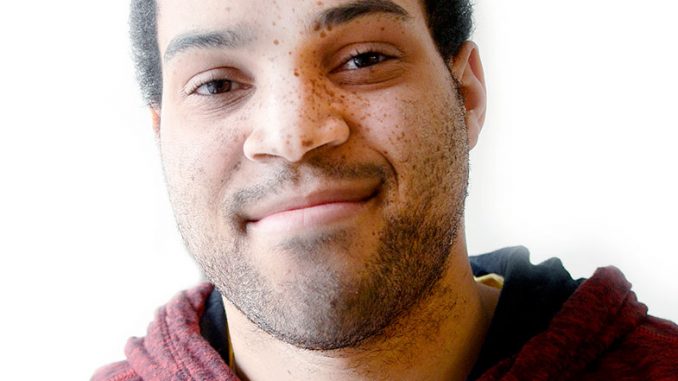
 Last month, a University of Florida defensive back stirred controversy after calling college football a “modern form of slavery.”
Last month, a University of Florida defensive back stirred controversy after calling college football a “modern form of slavery.”
His outrage stemmed from the reported $527.4 million the Southeastern Conference earned in revenues last football season.
He apologized later, saying he went “too far,” but he wasn’t the first one to make this argument.
In a book published in 1995, Walter Byers, the original executive director of the NCAA who served from 1951 to 1987, made the same comparison.
“I attribute [the exploitation of college athletes], quite frankly, to the neo-plantation mentality that exists on the campuses of our country and in the conference offices and in the NCAA that the rewards belong to the overseers and the supervisors. What trickles down after, that can go the athletes,” Byers wrote.
What Byers didn’t know at the time was just how great those rewards would swell over the following two decades. For most colleges and universities, football is the cash cow that supports multi-million-dollar athletic budgets. For the elite, it does much more than that.
So why—when departments are bringing in more than ever as a result of growing television contracts, endorsements and other revenue sources—are athletes being disciplined for things as simple as signing an autograph for money?
A lot of people point to the full scholarships these athletes earn. These scholarships are worth more than ever as the amount of student debt continues to grow—these are student-athletes, after all.
“They’re students,” Athletic Director Pat Kraft, a former college football player, told The Temple News last October. “I got my whole tuition paid for, I got insurance covered when I needed it. I’ve got academic support, so there is a value there.”
But if it is about the education, the university wouldn’t send its non-revenue sports teams to Florida or Oklahoma on weeknights, so why do they?
It surely has something to do with the television revenue and level of competition that the American Athletic Conference offers.
The football team traveled to North Carolina on a Thursday and Texas on a Friday last season. These games weren’t scheduled with education in mind, but because ESPN offers the university money to play on those days.
In higher-level football and basketball programs, departments have been trying and succeeding to get kids passing grades through fraud and easy classes. Last year, the NCAA opened investigations into alleged academic misconduct at 20 universities.
With all of this information, it hardly seems college athletics programs nationwide are consistently prioritizing the education aspect of a student-athlete’s time. A free education at Temple is a valuable tool, but that education isn’t provided for an athlete to perform in the classroom but on the field, and their schedule will mirror that commitment.
“I think college athletes should get paid,” said former football player Anthony Robey, who played for the Owls from 2010-14. “During college, we have to dedicate so much time to school and athletics. This leaves us with no time to work, because we are simply too busy. Many times I had to rely on my parents to give me money and they did not always have the money to give.”
With a growing budget as a result of a promising football season, Temple surely has the surplus to shave out a profit for the athletes whose performance earned them the surplus, if the NCAA would allow it.
A compelling argument is the fear that by funneling money back to paying revenue athletes would lead to the loss of funding for the non-revenue sports currently utilizing the money.
While it shouldn’t be the revenue-generating athlete’s responsibility to fund non-revenue sports, it still doesn’t explain the NCAA’s restrictions on all profits generated by student athletes.
Last football season, Louisiana State University running back Leonard Fournette auctioned a signed jersey in hopes to donate the proceeds to South Carolina flood victims.
The jersey sold for $101,000, proving two things: at least one college athlete’s sweaty, game-worn jersey was worth more than his full scholarship, and that the NCAA is keeping dozens of athletes from earning millions of dollars every year.
The NCAA is among the few institutions that legally binds its participants from earning a profit on a free market. It would seem Fournette would gladly give away his scholarship if it meant he could sell his jersey after each game—it would surely multiply his earning power exponentially.
If I decided to sell this column to a journal, neither The Temple News nor the university would have anything to say about it. I wouldn’t lose my academic scholarship, despite the obvious fact that I’ve used the education it pays for to sharpen my writing skills.
If senior quarterback P.J. Walker decides to sell his cleats for $40,000, he’d be suspended. If he participated in a camp and collected money, he’d face the same outcome.
Unsurprisingly, the only commercialization Walker and his teammates are allowed to participate in are the ones the university gets paid for: Under Armour, Matt Rhule Football Camp and many others.
The NCAA can continue to continue to act as though covering tuition and other fees are enough, but the $527.4 million check the SEC just cashed might beg to differ.
EJ Smith can be reached at esmith@temple.edu or on Twitter @ejsmitty17.


Be the first to comment